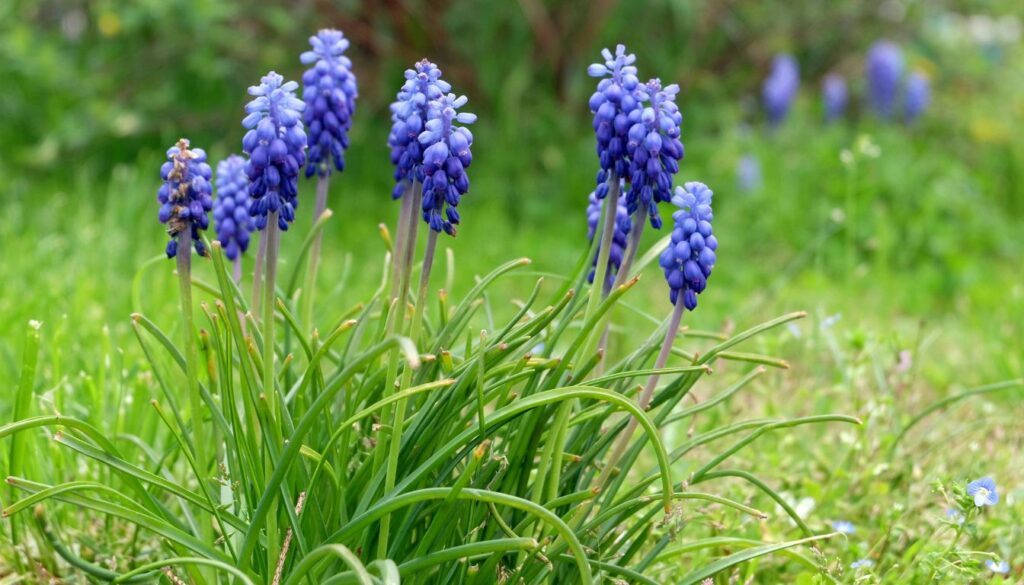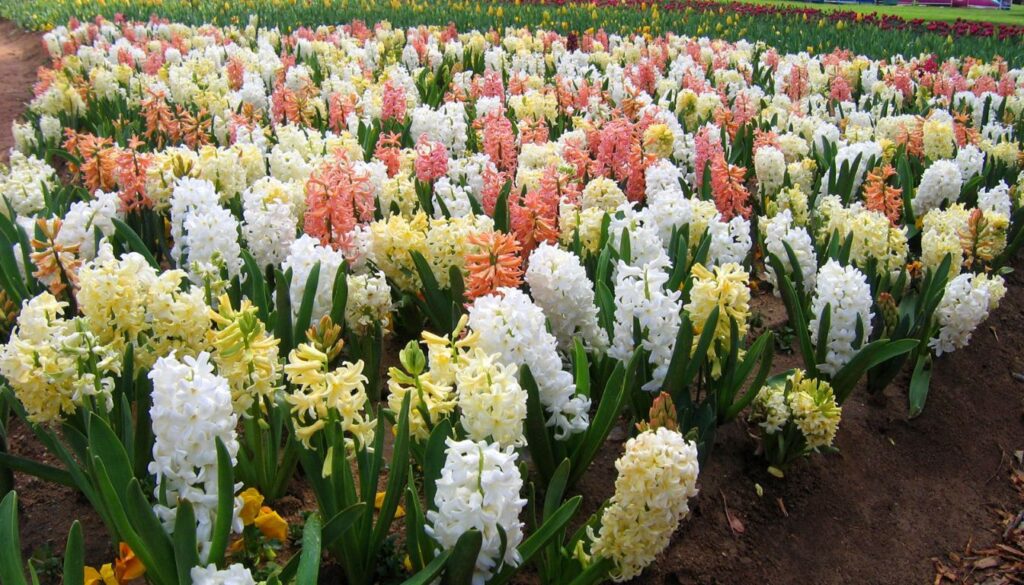When spring rolls around, there’s nothing quite like the vibrant beauty and intoxicating fragrance of hyacinths to brighten up your garden. These stunning flowers come in a variety of colors and forms, making them a favorite for both seasoned gardeners and newcomers alike. Imagine transforming your outdoor space into a colorful oasis, filled with the sweet scent of blooming hyacinths that beckon you to stop and take a closer look.
Overview of Hyacinth Varieties
Hyacinths come in many stunning varieties, each boasting unique colors and fragrances. Classic options include the Dutch Hyacinth, known for its robust growth and vibrant blooms. This variety thrives in gardens and pots alike.
Fragrant favorites include the Woodland Hyacinth. This type offers a lovely scent, ideal for adding charm to shaded areas. You’ll appreciate the soft hues of blue and purple this variety produces.
The Single Hyacinth stands out for its simple elegance. Its blooms feature a cleaner, more minimalistic shape. I enjoy using these in floral arrangements due to their height and beauty.
For something striking, consider the Double Hyacinth variety. It showcases fuller flowers, giving your garden a plush look. These dense blooms often attract attention, turning heads with their captivating structure.
Check out the Miscellaneous Hyacinths, like the Imperial and the Roman types. These bring a delightful twist to gardens. They come in various shades, ensuring every garden can find its perfect fit.
Popular Hyacinth Varieties

Hyacinths come in various types, each adding its charm to gardens. Let’s explore some popular varieties.
Dutch Hyacinths – The Best Hyacinth Varieties for a Colorful Spring Garden
Dutch Hyacinths stand out for their vibrant colors and strong scent. I enjoy their classic appeal, often seen in shades of blue, pink, white, and purple. These bulbs bloom in early spring, signaling the arrival of warmer weather. They’re sturdy and easy to grow, making them a favorite for many gardeners, including me.
French Hyacinths
French Hyacinths offer a softer look and sweet fragrance. They come in many pastels, perfect for creating a gentle garden vibe. I find these varieties bloom a bit later than Dutch ones, adding more color to my garden as spring progresses. Their delicate flowers are fantastic for both cutting and enjoying indoors.
Species Hyacinths
Species Hyacinths include more unusual and often smaller varieties. They bring unique flavors, with many native to the Mediterranean region. I appreciate how these types thrive in various conditions, making them versatile additions. Some species, like the trailing Hyacinth, can even grow well in containers. They add a delightful twist to typical gardens.
Planting different hyacinth varieties fills my yard with beauty and fragrance, creating a lively spring atmosphere.
Growing Conditions for Hyacinth Varieties
Hyacinths thrive under specific conditions that enhance their beauty and fragrance. Understanding these needs makes growing them a rewarding experience.
Soil Requirements – The Best Hyacinth Varieties for a Colorful Spring Garden
Hyacinths prefer well-drained soil. A pH level between 6.0 and 7.0 promotes healthy growth. I often mix organic matter, like compost, into the soil to improve drainage and provide nutrients. Soil that retains too much moisture can lead to bulb rot. If the soil is too heavy, consider adding sand or perlite for better drainage. That’s how I create a cozy home for my hyacinths.
Light and Water Needs
Hyacinths enjoy full sun. They perform best with at least six hours of sunlight daily. I plant them in spots that catch the morning sun but offer shade in the afternoon heat. Watering is crucial. During the growing season, I keep the soil slightly moist but avoid sogginess. Once the flowers bloom, I ease back on watering to prevent rot. Remember, happy hyacinths need just the right amount of love to flourish.
Care and Maintenance
Caring for hyacinths ensures they thrive and display their stunning flowers. I focus on two main aspects: fertilizing and managing pests.
Fertilizing Hyacinths – The Best Hyacinth Varieties for a Colorful Spring Garden
I recommend fertilizing hyacinths right after planting. A balanced fertilizer with equal parts nitrogen, phosphorus, and potassium helps support healthy growth. I usually aim for a slow-release option, which provides nutrients gradually. If you spot the first blooms, it’s the perfect time to apply a light top-dressing. This boosts next year’s performance, making them shine as brightly as my favorite spring memories.
Pest and Disease Management
I keep an eye out for common pests like aphids and snails. Spraying insecticidal soap works well against aphids. For snails, I sprinkle diatomaceous earth around the plants. It creates a barrier that they’re less likely to cross. I also watch for signs of diseases such as gray mold and bulb rot. If I notice any, I promptly remove and dispose of affected plants. Good air circulation around the flowers is key to preventing mold. A little prevention goes a long way in keeping my garden healthy.
Before You Go – The Best Hyacinth Varieties for a Colorful Spring Garden

Hyacinths truly bring a special charm to any garden. Their vibrant colors and enchanting scents create a lively atmosphere that’s hard to resist. By exploring the various hyacinth varieties I’ve discussed, I can confidently say there’s something for everyone.
Whether I choose the classic Dutch Hyacinth or the delicate French Hyacinth, each option has its unique appeal. With proper care and attention to their specific needs, I can enjoy a stunning display of blooms every spring. Embracing these beautiful flowers not only enhances my outdoor space but also brings joy and beauty to my gardening experience.
Don’t forget to add theherbprof.com homepage to your favourites so you don’t miss out on future articles.
References – The Best Hyacinth Varieties for a Colorful Spring Garden
Little Herb Encyclopedia, by Jack Ritchason; N.D., Woodland Publishing Incorporated, 1995
The Ultimate Healing System, Course Manual, Copyright 1985, Don Lepore
Planetary Herbology, Michael Tierra, C.A., N.D., Lotus Press, 1988
Handbook of Medicinal Herbs, by James A. Duke, Pub. CRP Second Edition 2007
The Complete Medicinal Herbal, by Penelope Ody, Published by Dorling Kindersley
Check the Following Article
Eggplant Health Benefits: Nourish Your Body Naturally
Hair Loss and Diabetes: Causes, Solutions for Hair Health
Pears and Health Benefits: Naturally Boost Iron Levels
Argan Oil Benefits: Your Go-To Guide for Beauty and Health
Frequently Asked Questions – The Best Hyacinth Varieties for a Colorful Spring Garden
What are hyacinths, and why are they popular in spring gardens?
Hyacinths are colorful, fragrant flowers that bloom in spring. Their vibrant hues and aromatic scent make them appealing to gardeners, enhancing outdoor spaces. They are favored by both experienced and novice gardeners for their beauty and ability to transform gardens.
What are the different varieties of hyacinths?
Hyacinths come in various types, including Dutch Hyacinths, known for their bold colors; Woodland Hyacinths, ideal for shade; Single Hyacinths with elegant blooms; and Double Hyacinths with fuller flowers. There’s also Imperial and Roman Hyacinths, offering diverse shades for any garden.
What are the ideal growing conditions for hyacinths?
Hyacinths thrive in well-drained soil with a pH between 6.0 and 7.0. They require full sunlight for at least six hours daily and should be watered carefully to prevent bulb rot. Adding organic matter like compost can improve drainage and nutrient levels.
How can I care for and maintain hyacinths?
To care for hyacinths, use a balanced, slow-release fertilizer after planting and consider top-dressing when blooms appear. Monitor for pests like aphids and snails, using insecticidal soap and diatomaceous earth as needed. Good air circulation is also important to prevent diseases.
Can hyacinths be grown in containers?
Yes, many species of hyacinths, known for their compact size, can be grown in containers. Ensure pots have good drainage, use suitable soil, and place them in an area that receives adequate sunlight to promote healthy growth and vibrant blooms.

